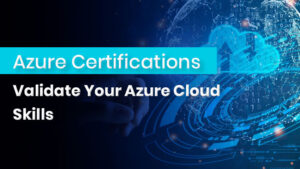
How to Harden Your Infrastructure Using CIS Benchmarks
How to Harden Your Infrastructure Using CIS Benchmarks Introduction As more organizations go faster with their digital transformation, the security and resilience of IT infrastructure
Limited-Time Offer! Get an exclusive 40% OFF on IPSpecialist Premium Monthly & Annual Plans. Use Promo Code: UPSKILLNOW at checkout.

How to Harden Your Infrastructure Using CIS Benchmarks Introduction As more organizations go faster with their digital transformation, the security and resilience of IT infrastructure

Azure Certifications – Validate Your Azure Cloud Skills Introduction Cloud computing has transformed the business landscape, providing scalability, flexibility, and affordability in a way

Top Cyber Security Trends: What Every Organization Must Know Introduction In an era marked by digital transformation, remote workforces, and rapidly evolving threat landscapes,
Table of Contents
With the help of the cloud-based data integration tool Azure Data Factory (ADF), you can design data-driven processes for coordinating and automating data transformation and transportation. ADF does not keep any data on its own. You can design data-driven workflows to coordinate data transfer between the supported data stores, process the data utilizing compute services in different locations or process the data locally. You can also use programmatic and UI mechanisms to monitor and manage workflows. This article covers detailed knowledge of Azure Data Factory.
You can build data pipelines using the Data Factory service that moves and transforms data and schedules the pipelines to run regularly (hourly, daily, monthly, etc.). As a result, time-sliced data is used and produced by processes.
Create connections to all required data and processing sources, such as file shares, FTP, SaaS services, and online services.
Then, move the data to the central location for further processing.
Data is converted utilizing computing services like HDInsight Hadoop, Spark, Azure Data Lake Analytics, and machine learning once in a centralized data store in the cloud.
Deliver transformed data from your cloud storage sources to on-premise sources like SQL Server or leave it there for BI and analytics tools and other applications to use.
Azure Data Factory requires the following four crucial elements to describe input and output data, processing events, as well as the timetable and resources required to complete the intended data flow:
An input dataset represents a pipeline activity’s input. An output dataset represents the output of the activity. In the Azure Blob Storage, for instance, an Azure Blob dataset provides the blob container and folder from which the pipeline should read the data. An Azure SQL Table dataset designates the table to which the activity will write its output data.
They are utilized to combine actions into a unit that works as a whole to complete a task. There may be one or more pipelines in a data factory. For example, a pipeline might have a set of operations that ingest data from an Azure blob and then split it using a Hive query on an HDInsight cluster.
Data transfer and transformation are the two sorts of activities Azure Data Factory offers.
Enterprises interested in migrating their Enterprise Data Warehouses (EDW) and Data Lakes from on-premises to the cloud will also need to consider code migration. The coding is what gives the data context and meaning. Data pipelines and a variety of objects will make up the code. Millions of lines of code and thousands of data pipelines must be transferred with each EDW or Data Lake cloud migration because many organizations have spent years maintaining, extending, and building their code.
Azure Data Factory (ADF) is the best option for migrating these existing ETLs when shifting workloads (data and code) to Microsoft Azure. The autonomous movement and manipulation of data at scale in the cloud is made possible by ADF.
The following are some of the significant advantages of Azure Data Factory:
ETL tasks from on-premises EDWs and Data Lakes can be transferred to the Azure cloud. ETL packages can be deployed, executed, and managed using ADF.
The ETL GUIs are similar to the Azure Data Factory GUI. ADF offers a short learning curve for developers already familiar with the other ETL interfaces.
The tool manages all of the drivers needed to integrate with Oracle, MySQL, SQL Server, or other data stores. AWS or GCP can be utilized with this product even though it is an Azure offering.
As a result, Data Factory may be utilized with most databases, any cloud, and various add-on tools, including Databricks. This service processes, transforms and stores large volumes of data. Through ML models, Databricks also enables the exploration of unstructured data (such as sounds and photos).
Accessibility is essential when managing and controlling data. Data mobility is available in more than 25 countries and is secured by Azure security architecture, giving Azure Data Factory a global cloud presence.
The tool enables the creation of roles and grants each one a set of permissions. Contributor, owner, and administrator are the positions.
Data Factory transfers transforms, and regulates data using a sophisticated ETL process. The program is fully automated and aids in effectively orchestrating your data. Therefore, Azure Data Factory performance enables spending the least time configuring the tool, giving you more time to gain insights.
Additionally, Azure is responsible for managing the Data Factory, upgrades, and security patches and ensuring as little downtime as possible. You always get access to the most recent product as a result.
Since the solution is primarily automated, little human labor is needed. One developer must set up the Data Factory by the strategy, and a solution architect is required to plan the data collection process. As a result, working with Data Factory does not require you to hire a sizable workforce.
You must create a code repository for your big data to get end-to-end development.
Development, production, and test environments are all combined on a data platform. Varying situations require varying amounts of computing. Therefore, you need diverse data factories to handle the workloads of various contexts.
However, the ‘Switch’ action in Azure Data Factory enables the management of many environment set ups with a single data platform. Each environment has a unique work cluster coupled to a central variable control to switch between several activity paths.
The significance of establishing appropriate naming conventions for any resource cannot be overstated. You must be aware of the permitted characters while using naming conventions.
With taking testing into account, the Azure Data Factory implementation is complete. One essential component of CI/CD deployment strategies is automated testing. You should consider automating end-to-end testing on your pipelines and associated repositories in Azure Data Factory. This will make tracking and verifying how each pipeline action is carried out easier.
The following are some examples of how Azure Data Factory might be used:
You only pay with Data Factory for what you require. In reality, pipeline orchestration and execution are what determine data pipeline pricing.
Cloud data and on-premises data may be readily integrated with Azure Data Factory. Any data platform, cloud, and machine learning project must use the tool.
Data Factory offers advantages, including improved security, productivity, and cost-cutting. It is also highly automated and simple to use.
© 2025 All rights reserved | Privacy Policy | Terms and Conditions | Sitemap | Cookie Policy




